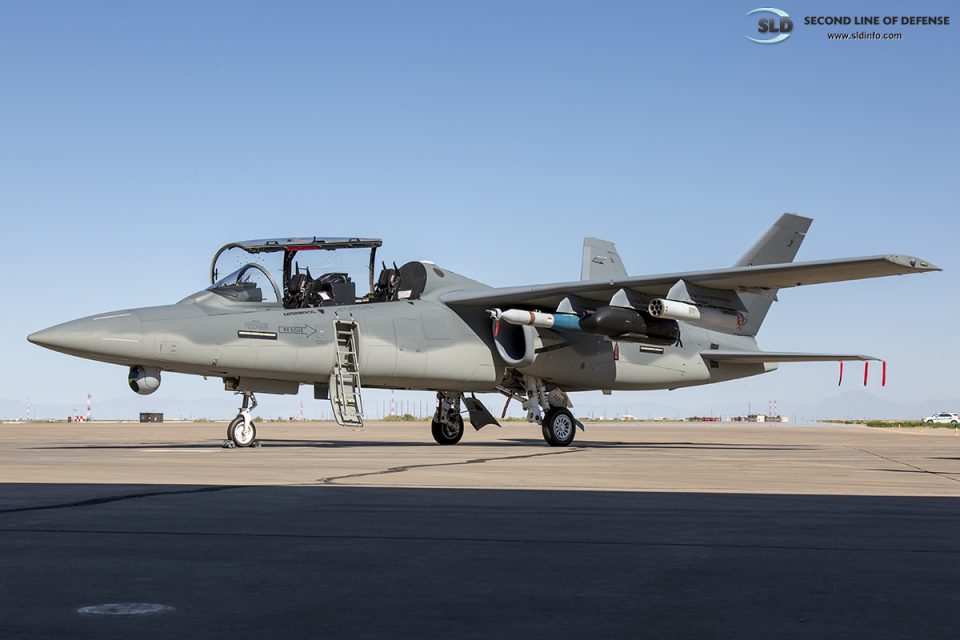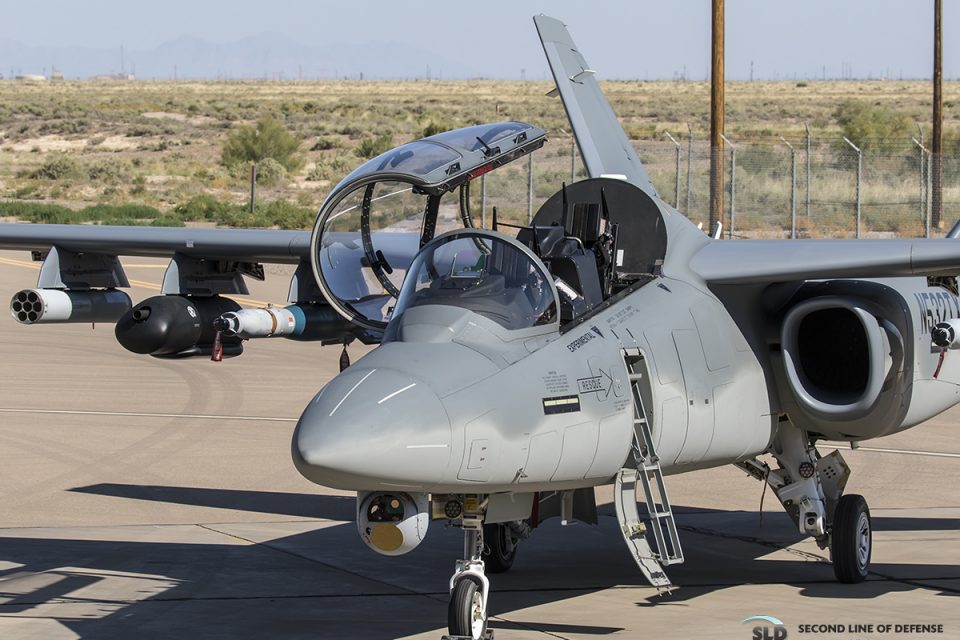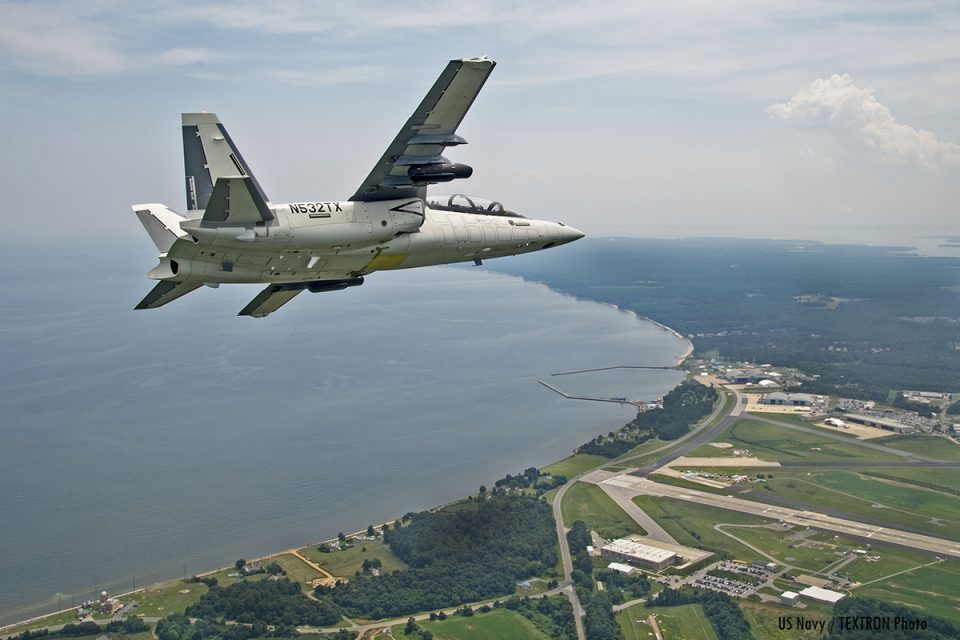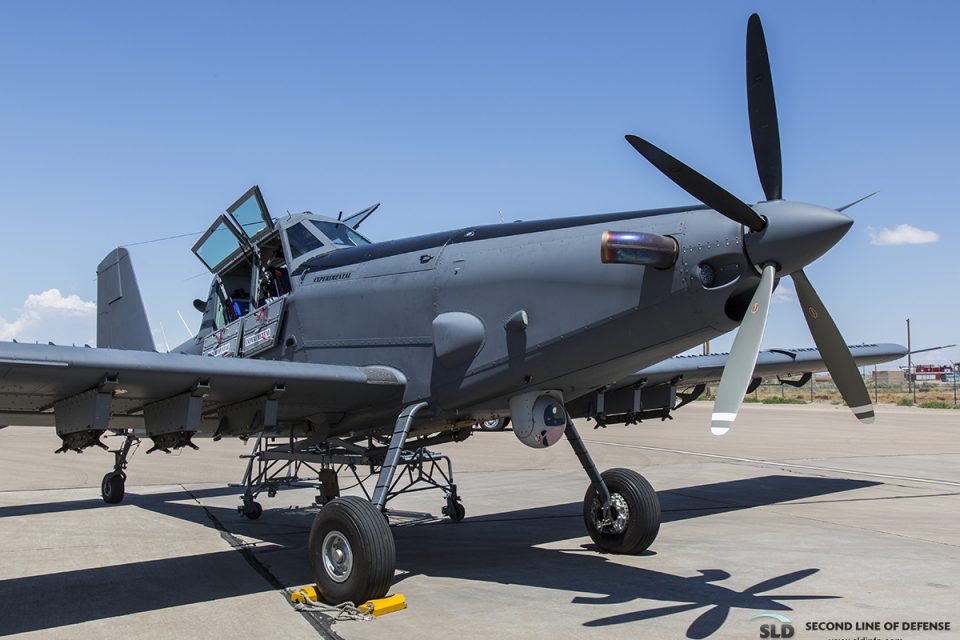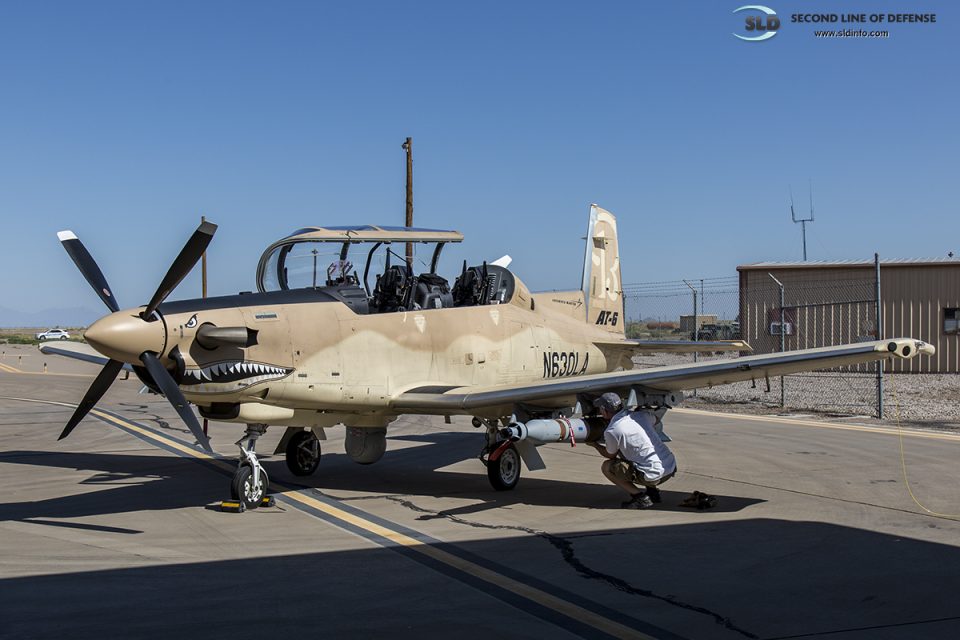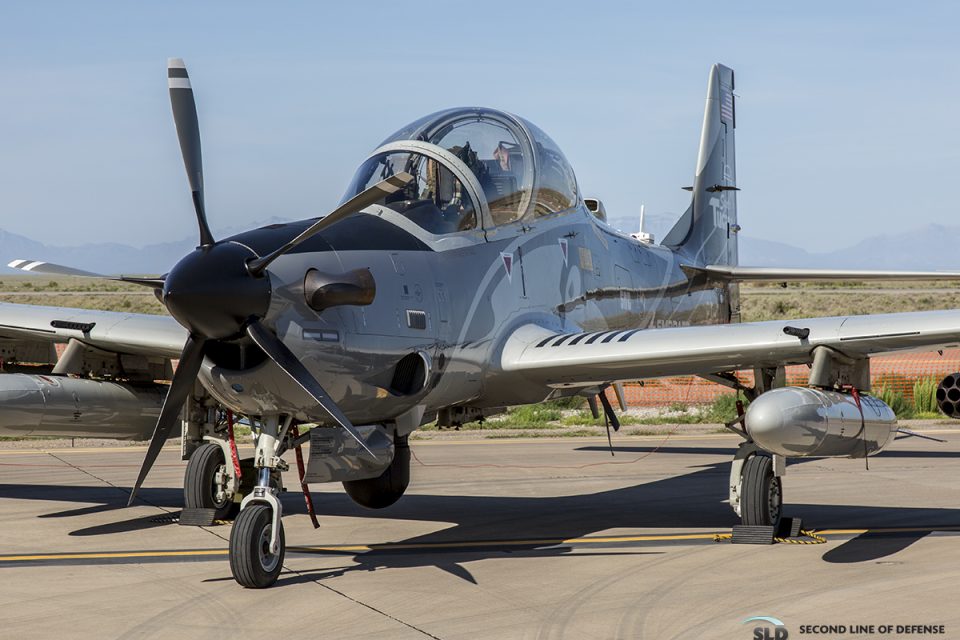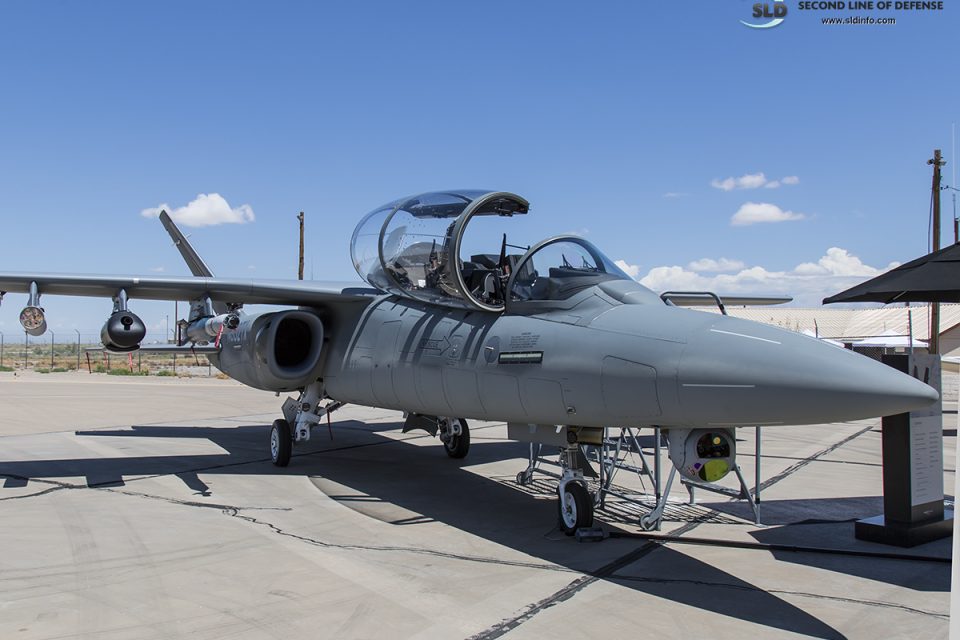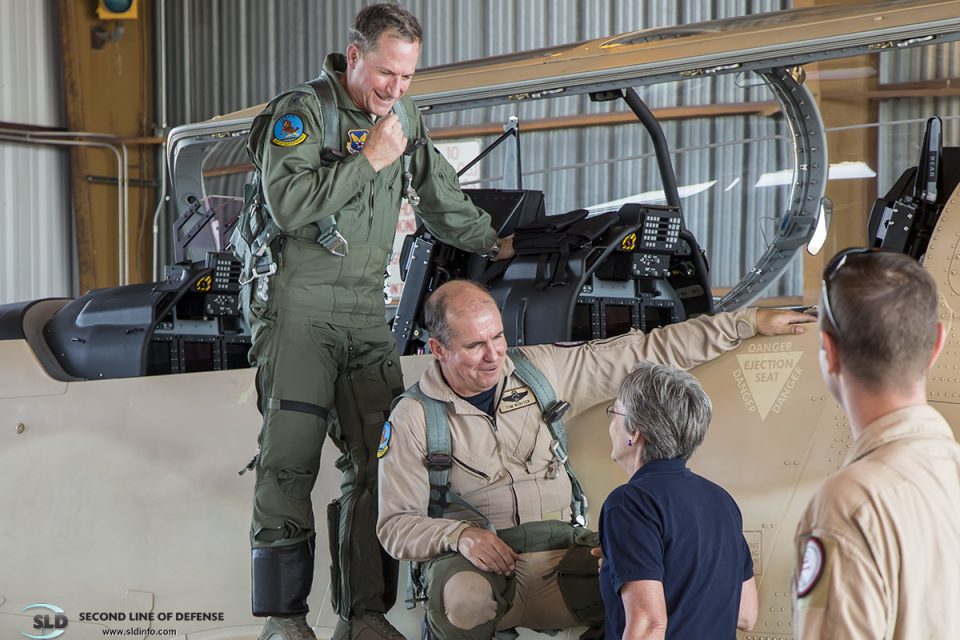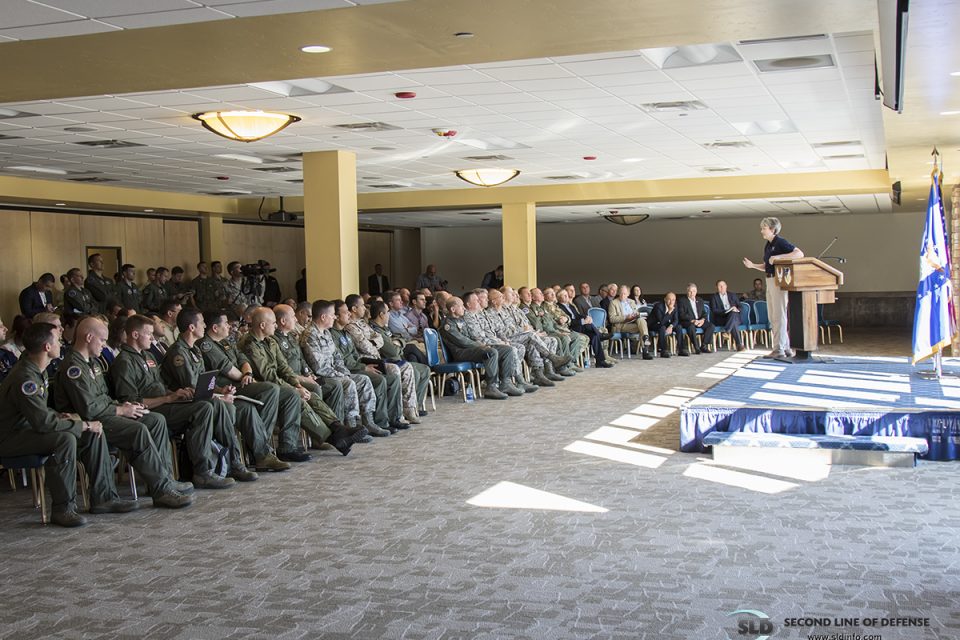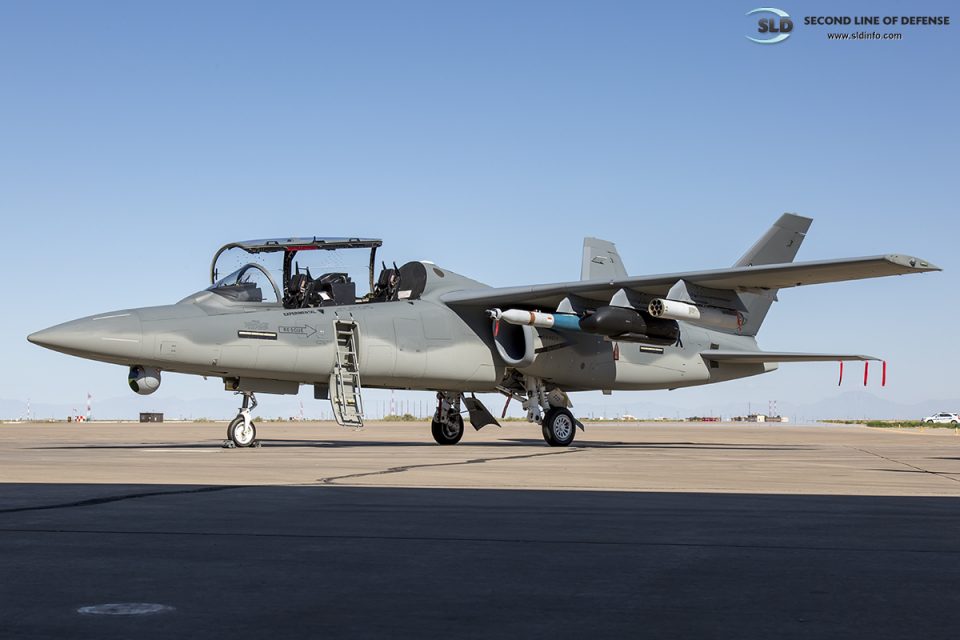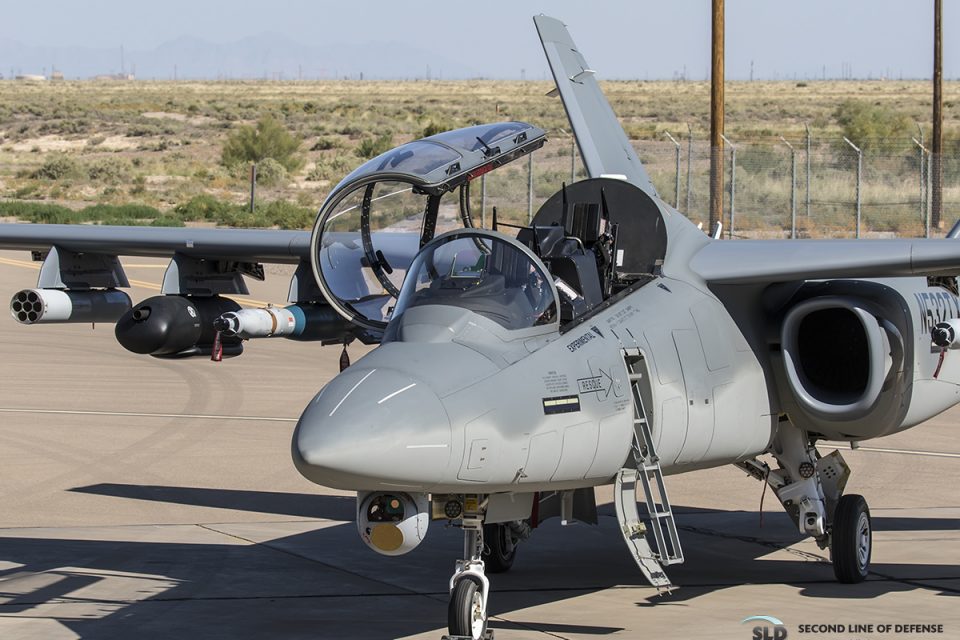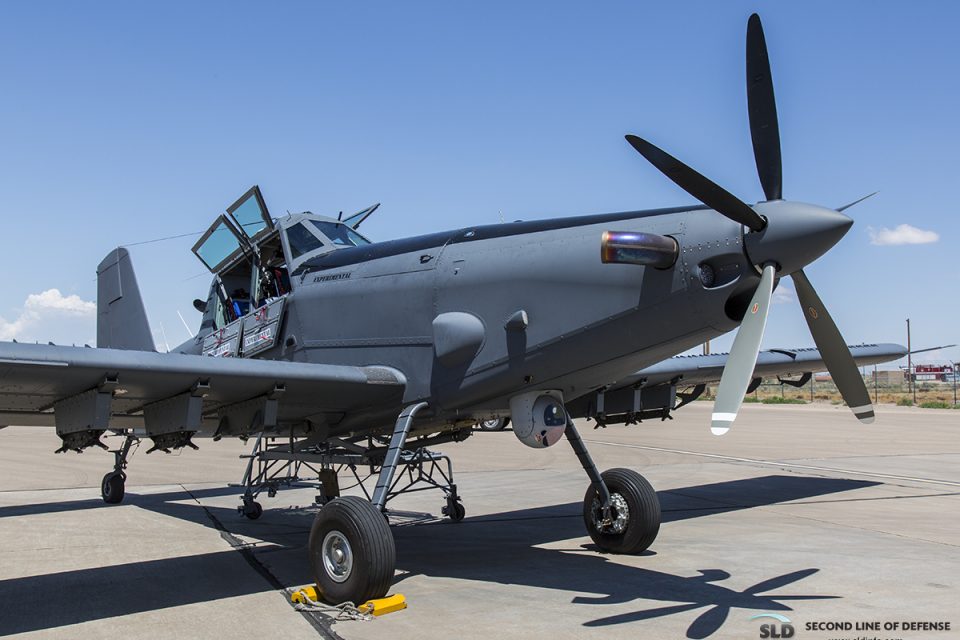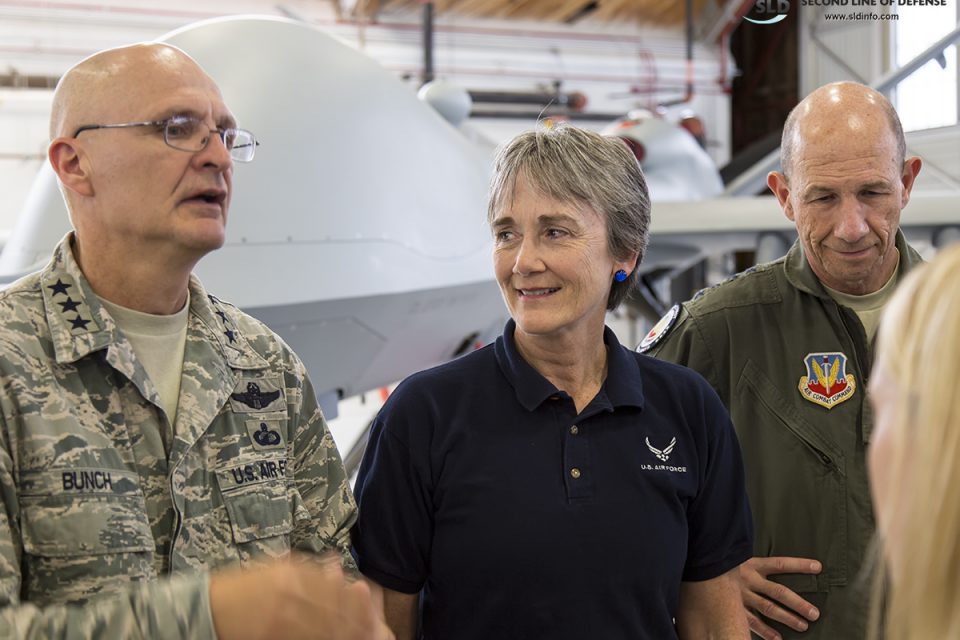2017-08-15 By Todd Miller
The desert skies of southern New Mexico currently host the USAF Light Attack Experiment (OA-X).
During the experiment the three turboprops (Sierra Nevada Corp./Embraer A-29 Super Tucano, Air Tractor Inc./L3 Platform Integration AT-802L Longsword, Textron Aviation’s AT-6 Wolverine) and single jet (Textron Scorpion) are piloted by Air Force personnel and measured on several performance parameters.
The Air Force indicated that each aircraft would be evaluated on the following missions;
- Basic Surface Attack
- Close Air Support
- Daytime Ground Assault Force
- Rescue Escort
- Night Basic Surface Attack
- Might Close Air Support
Lt. Col Robert Odom, Deputy Commander of the 704th Test Group noted that through the mission exercises the participating aircraft will be assessed by criteria such as; pilot workload to find and track a target, range scores, assessments of displays, capability in austere environments, cockpit visibility, loiter capability, communications, target tracking, lines of sight, sensor tracking, takeoff distance, acoustic signatures and more.
General Mike Holmes, Commander of Air Combat Command (COMACC) commented on the experiment and associated aircraft requirements, “If you want to invest in things that are already available, if you want to go with commercially off the shelf capabilities then you have to live with commercially off the shelf capabilities for the most part.
So what we want to do is let our [Air Force] personnel go fly, let our personnel participate in the maintenance and get data.
Part of this that is really important that we talked about briefly was the signature measurements because I want to send our young Americans out in a platform they can survive in doing this job.”
Holmes continued, “…after the experiment is complete, we’ll take all that data, we’ll come together and bring to the Chief of Staff and the SecAF the option to go with a combat demo next year.
If they say yes, Air Combat Command (ACC) will take the lead from Air Force Material Command (AFMC) who ran this experiment and [ACC will] run the combat demo.”
However, it was made very clear that the experiment was not a fly-off or competitive evaluation and there is no certainty that procurement of one of the aircraft will follow.
As Secretary of the Air Force Heather Wilson explained, “This is an experiment, we are gathering data on these four different airplanes.
The data is intended to inform strategic decisions and tell us whether we take this to the next stage to what we call a combat experiment, whether any of these airframes are ready for that.”
Invaluable insight was provided by Col. Michael “Starbaby” Pietrucha, pilot and ACC staff lead for light attack.
Pietrucha served as an instructorelectronic warfare officer in the F-4G Wild Weasel and the F-15E Strike Eagle completing 156 combat missions.
Pietrucha took part in 2.5 SAM kills over 10 combat deployments.
Pietrucha stated, “Over the past few years our readiness is hurting.
We are flying the wings off our aircraft to do things that those aircraft are vastly overqualified to do.
If we have a light attack aircraft we can take some of that burden [off our 4th and 5th Gen fighter].
We can take our 4th and 5th Gen force and go back to training for major [high intensity] combat operations.
If we deploy our 4th and 5th Gen aircraft less we can restore our readiness to acceptable levels.”
Pietrucha continued, “Right now today, we have more missions than we have Air Force.
The Chief of Staff has been pretty clear that if we do not have additional money and personnel we cannot pursue the light attack program.
The best we can do is move a hole from one place to another, and we already have too many holes.”
Aside from the lower cost of the aircraft, one of the clear operational savings would be the reduced fuel consumption.
Pietrucha noted, “the amount of fuel it takes to keep a turboprop in the air for an hour with weapons aboard is the amount the F-15E Strike Eagle uses taxiing down the runway in 6-9 minutes.”
Pietrucha referenced an article he had authored that the logistics of moving all that fuel to an operational area amounted to ‘logistical fratricide’.
Fuel consumption vs fuel conservation clearly demonstrates a variety of exponential costs vs savings in the combat environment.
The introduction of a light attack aircraft will offer low procurement costs, efficient operations (in the appropriate threat environment) and an improvement in readiness of the 4th & 5th Gen fleet.
The introduction of an appropriate number of light attack aircraft would also assist in addressing the pilot shortage in the USAF. A variety of sources indicate the USAF is currently 750 – 1000 pilots short.
The Air Force is executing an aggressive program of pilot retention and the addition of a light attack aircraft would make a positive impact.
Pietrucha explains, “People say, ‘you don’t have enough pilots, why do you need more aircraft?’ Good question. We need to absorb pilots. The Air Force takes a pilot out of pilot training and then to make him or her an experienced aviator that individual goes into a fighter squadron to get 500 flight hours, and then they are an experienced fighter pilot. The Air Force does not have enough airplanes to achieve that. It does not matter how many pilots the Air Force produces, they cannot absorb them.”
General Holmes commented on the same dynamic, “Part of the benefit of this airplane is that I can season and produce fighter pilots fast. I can fly a lot of hours on it pretty cheap so I can make an experienced fighter pilot (which is what I am short) fast. So as ACC Commander I would season pilots in this aircraft fast then bring them back for a short course to move them into a 4th or 5th Gen fighter.”
“[Considering the light attack aircraft], I can use them in combat (I think, we’ll find out). I can use them to season young fighter pilots fast. When they are in the US, I can use them to train tactical air control parties at a much lower cost per flying hour. I can use them to support my maneuver unit training with the Army at a much lower cost per flying hour and still work through all the close air support procedures. It is a capability we think (we’re going to do these experiments and see) that would let us continue to do another multi-year approach to fighting violent extremist organizations at a cheaper cost in a fiscal environment where every dollar counts. When preparing for the higher end fight – the 5th gen fight, every dollar counts.”
It was noted that the Super Tucano and Wolverine were the two aircraft that met the Air Force’s defined requirements for the light attack platform. The Scorpion and Longsword were also embraced in the experiment to see what could be learned by the Air Force and the industry partners. No specifics were provided as to how the Longsword and Scorpion did not currently meet the requirements. However, they are technically both experimental platforms (and the Longsword lacks ejection seats) while the Wolverine and Super Tucano are in production.
The Scorpion while perhaps a little more aircraft than the Air Force had in mind, looks to be a very interesting option. The platform demonstrated excellent maturity and reliability this past summer when the small fleet of 4 Scorpions was successfully deployed to four locations worldwide (Paris Air Show, Royal International Air Tattoo [RIAT], NAS Patuxent River, MD and its home base, Wichita, KS).
The Scorpion realized a 100% mission completion rate during weapons testing at NAS Pax River this summer. The Testing utilized the GBU-12, LAU-131, and HMP-400 weapons in 5 different configurations over 5 consecutive days. The weapons testing went so smoothly it wrapped up 4 days early. The aircrafts economy, capability in austere environments, design for modular payloads and advanced ISR capabilities make it a compelling option.
Regardless of the apparent value of introducing a low cost and capable light attack aircraft, it will require budget. Pietrucha summarized the current situation, “Bottom line – right now today, we have more missions than we have Air Force. The Chief of Staff has been pretty clear that if we do not have additional money and personnel we cannot pursue the light attack program. The best we can do is move a hole from one place to another, and we already have too many holes.”
The rationale of the light attack experiment and potential adoption of such aircraft within the USAF appears sound.
It will be up to the Air Force to identify the platform that offers the greatest value to address the identified needs, as well as pair with the fleet wide capabilities that the Air Force is introducing.
The Second Line of Defense extends thanks and appreciation to Arlan Ponder and the entire Public Affairs team and personnel of 49th Wing Holloman AFB, as well as all the leaders of the USAF that granted time, availability and expertise to our group.
You were all gracious and professional hosts.


